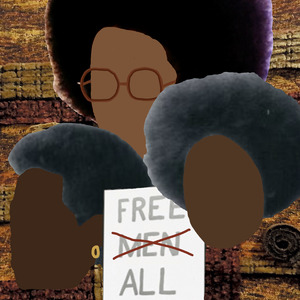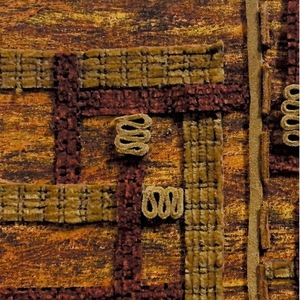Period 1: 1968-1978
Artist Statement
The first poster of the three-part series reflects the themes and findings of my research into Dartmouth liberatory protesting from 1968 to 1978. Featured on the poster are the illustrated heads of three black women surrounding a protest sign displaying the words ‘Free Men All’. Taken from a pre-coeducation photograph of Dartmouth students protesting the 1963 visit of notable segregationist, George Wallace, to Dartmouth’s campus uses digital alteration to cross out the word ‘men’ from the protest sign.
This decision was made to thematically distinguish my research into Dartmouth liberatory protests as one being instrumentally shaped by the institutional inclusion and strides for the equality of women. The incorporation of the three women juxtaposed with the altered poster places the time period in a post-coeducation lens and denotes the beginning of the research period as a time that calls into question the changes and shifts in liberatory protesting that came with the integration of women onto Dartmouth’s campus amidst an ongoing strive for liberation. My decision to feature three black women on the poster—illustrated using photos from black female students from the time period—was spurred from my research goal to center the black woman experience while using their duly disenfranchised positionality in analyzing institutional progress. The graphic content of this poster materializes the womanist lens I equipped during my fellowship in utilizing archival materials like the Redding Report to ground the perspectives and struggles of black female Dartmouth student life in understanding protesting methodologies.
I chose to create handcrafted poster backgrounds as a method to parallel the handmade construction of protest signs and as a crafting project that allowed me tap into my formal analysis of art as utility. Parallel to the form of a protest sign, being able to utilize the base as a signifier of meaning became extremely important to me in creating visual allusions to student protesting methods. The overlapping, grid-like fabrics of different color was used to symbolize the foundational collaboration of Dartmouth student groups like the Afro-American Society, Students for a Democratic Society and the Interracial Student Group as participating agents in unifying student power and discovering novel ways to engage, mobilize and promote institutional change.
Upon the completion of the background, the poster was photographed and scanned to create the foundation for the digital collage with the addition of the digital illustration along with the repurposing and utilization of a protest sign photograph to create the final product. As an ode to the revolutionary Dartmouth women came before me and struggled for my institutional well-being, an important staple of the poster is the powerful imagery of hair within the piece; taken from a collection of photos and audio-visual materials I collected throughout my research, highlighting black hair as unified example of political resistance and liberation fully realizes the historical significance of the period. One that created new lanes that blended artistic and political revolution into ways that carved agency into the voices of Dartmouth students who were in opposition of administrative stagnancy and oversight.
 Historical Accountability Student Research Program
Historical Accountability Student Research Program

